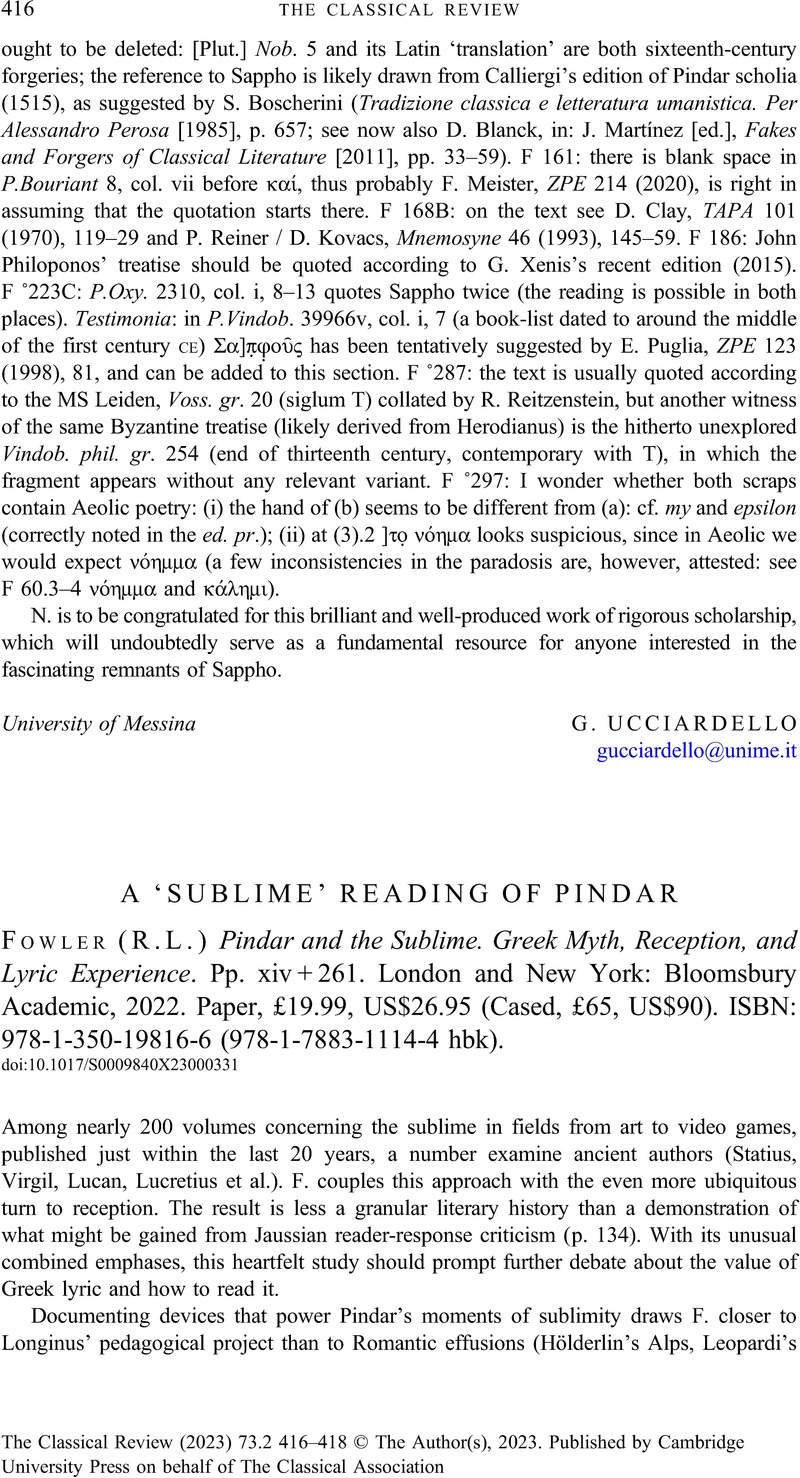No CrossRef data available.
Article contents
A ‘SUBLIME’ READING OF PINDAR - (R.L.) Fowler Pindar and the Sublime. Greek Myth, Reception, and Lyric Experience. Pp. xiv + 261. London and New York: Bloomsbury Academic, 2022. Paper, £19.99, US$26.95 (Cased, £65, US$90). ISBN: 978-1-350-19816-6 (978-1-7883-1114-4 hbk).
Review products
(R.L.) Fowler Pindar and the Sublime. Greek Myth, Reception, and Lyric Experience. Pp. xiv + 261. London and New York: Bloomsbury Academic, 2022. Paper, £19.99, US$26.95 (Cased, £65, US$90). ISBN: 978-1-350-19816-6 (978-1-7883-1114-4 hbk).
Published online by Cambridge University Press: 28 April 2023
Abstract
An abstract is not available for this content so a preview has been provided. Please use the Get access link above for information on how to access this content.

- Type
- Reviews
- Information
- Copyright
- Copyright © The Author(s), 2023. Published by Cambridge University Press on behalf of The Classical Association



